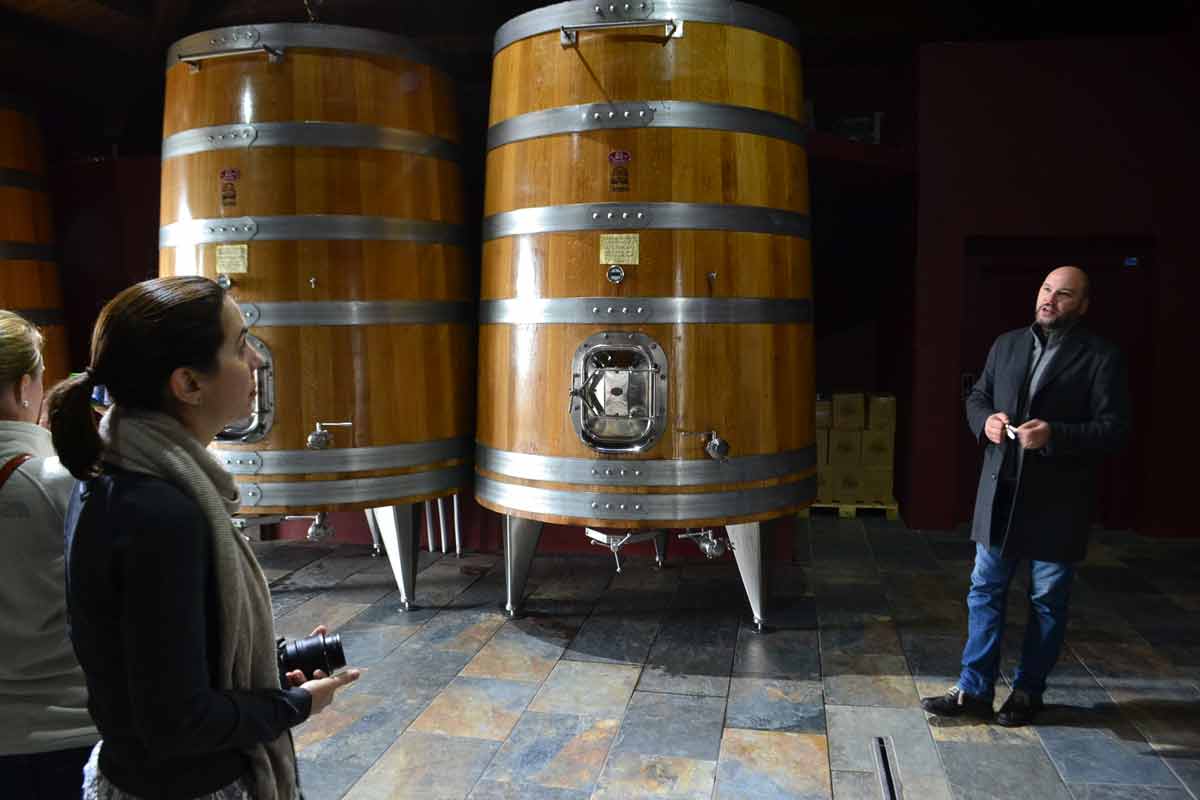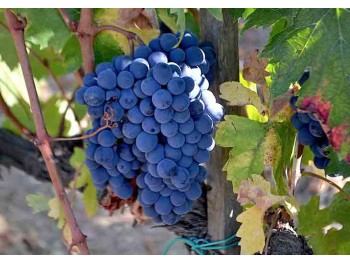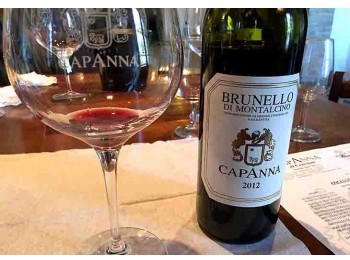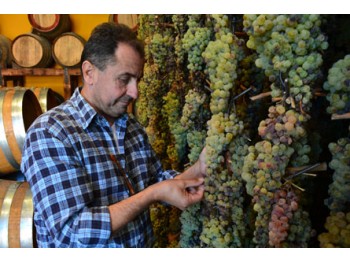

Montalcino and its own Brunello
#Tuscany Wine Regions
Oct
2023
It was only toward the end of last century that the first experiments were begun in order to improve and exalt the characteristics of a raw material and an environment no doubt quite special. Thus was born Brunello di Montalcino, as it is still created today, the fruit of a tenacious dedication, of loving watchfulness during the years of aging in the winery before it is presented to a world that has learned, in its turn, to love it. It is the end and beginning of a legend that each bottle renews.
The territory of Montalcino: climate, soil, and position of the vineyards.
The production area coincides with the communal territory of Montalcino. Distributed over that territory, according to the best viticultural tradition of the environment and marvelously inserted into the landscape, the Brunello estates offer numerous opportunities to visitors interested in wine as well as natural beauty. Passing through characteristic villages and thick woods, the traveler will discover well-tended vineyards, perfectly equipped and organized wineries, which are secret and the pride of each estate from the smallest to the largest.
The commune of Montalcino has located 40 km to the south of Siena. Its Territory, delimited by the Orcia, Asso and Ombrone valleys, has e nearly circular shape with a diameter of 16 Km. and a surface area of 24,000 hectares.
The local economy is prevalently agricultural and, in that context, the vine occupies only a small share of the total land surface: 50% is covered by wood and uncultivated land; 10% is planted in olive-grove, 8% is cultivated by vines of which more than a half are recorded in the list of the wine Brunello di Montalcino, the remainder is sown in grain, pastures and other cultivation. The hill of Montalcino having been formed in different geological eras, presents extremely variable soil characteristics, whether in constitution or structure.
For that reason, it is difficult to make generalizations that can be widely applied.
The lowest areas consist of terrains created by the deposit of alluvial material with an active stratum that is deep and quite loose, dating from the Quaternary Period.
Further uphill, the terrain, enriched by fossil material, has a reduced active stratum of soil formed by the decomposition of origin rocks, especially marl and limestone. The terrains are moderately sandy, rich in lime, mingled with wide areas of volcanic soil, but tends to be thin. There are also other terrains derived from stratifications typical of the Siena area that is used only for the cultivation of cereals.
The climate is typically Mediterranean with precipitation concentrated in the months of May, October, and November (700 millimeters annually on the average).
In Winter, snow is not rare above an altitude of 400 meters. Monte Amiata (1,700 meters in height), not far to the southeast, represents a natural barrier that protects Montalcino from most climatic adversities such as sudden downpours and hail-storms. The strip of the hill of moderate altitude, where the greater part of the winemaking estates is situated, is not affected by fog, ice or late frost as are the surrounding valleys, while the normal, persistent winds ensure the best conditions for the health of the plants.
The fundamentally mild climate and a large number of days of serene weather during the entire vegetative cycle assure the gradual and complete ripening of the grape clusters.
The existence in the territory of slopes with different orientations, the pronounced modulations of the hills, and the altimetric disparity between the low-lying areas and the higher districts (Poggio Civitella), produce climatic microenvironments that are diverse despite the relative compactness of the area.
The most widely used form of training of the vines at Montalcino is the Cordone Speronato , which involves short pruning (to two buds) of the variable number at the crown of the rootstock. The other form in use for Brunello di Montalcino is that of the "Archetto" (the modified Guyot system), this involves a single vine shoot, pruned to 6 to 10 buds, which alone is responsible for the vine's vegetation.
Wine tours in Montalcino:
Premium Brunello di Montalcino wine tour
Brunello wine tour - The Big Red
The Brunello di Montalcino
Visually Brunello di Montalcino is a limpid and brilliant wine with a lively garnet color and with an intense, persistent, full, and ethereal odor. In its odor can be detected the scents of bushlands, aromatic woods, small fruit, a light trace of vanilla and fruity jams, all combined.
To the taste, the wine has an elegant and harmonic body with strength and breeding. it is dry, with a pronounced aromatic persistence. Because of its characteristics, Brunello di Montalcino can withstand lengthy aging improving with time. It is difficult to say for how many years the wine will improve in the bottle.
That depends, in fact; upon the vintage. It ranges from a minimum of 10 years to 30, but it can be kept even longer. Naturally, it should be conserved in an appropriate way, in a cool cellar but, above all, in one where the temperature is constant, where there are no reverberations and odors. The bottle should also be laid down horizontally.
Combinations with Brunello di Montalcino
The elegance and harmonic body of the wine permit its combination with many complex and complicated dishes such as red meat, feathered and furry games also accompanied by mushrooms or truffles.
Brunello, in addition, is excellent with cheeses: aged tomes, parmesan, Tuscan pecorino. It also makes an excellent combination of meat dishes of international cuisine or with complicated sauces.
Because of its characteristics, Brunello is also a pleasant meditation wine. Brunello di Montalcino should be served in crystal glasses, balloon-shaped, in order to capture the compound and harmonious bouquet.
The wine should be served to a temperature of about 18-20 degrees Centigrade. For a wine that is quite old, it is wise to decanter so that it can breathe.
Commercial development of Brunello di Montalcino
Brunello di Montalcino has become so famous that it has found its way to some of the world's most imposing tables. Still, it should not be forgotten that Brunello di Montalcino was virtually unknown outside its production area or beyond a limitate circle of connoisseurs until about the mid-1960s. it gained more and more in reputation during the succeeding decade until it became, perhaps the most esteemed of Italian quality wines.
To understand this success, it is necessary to realize that, while about 800.000 bottles of the 1975 vintage were produced by about 25 estates, there were 3.5 million bottles, made by about 120 estates, of the 1995 vintage.
It is easy to understand from those numbers that this wine is precious and that it is sought by the most refined tables throughout the world. The explanation for this phenomenon lies in the objective organoleptic quality of the wine, in the roundness and harmony of its flavor, in its great capacity to develop even further through aging.
Brunello di Montalcino is not simply an Italian phenomenon: it is world-wide. There is no country where quality wines are consumed in which this wine cannot be found. It must also be said that Brunello di Montalcino is a figurehead that, penetrating all the world's markets, has contributed so much to the elevation of the image of Italian wine in general.
It must also be emphasized that abroad, its harmonious and aristocratic flavor has conquered not only the palates of those who have traditionally appreciated Italian wines but also those that were not in the least habituated to the country's products.
Production discipline of the Brunello di Montalcino
Long regarded as the finest expression of Italian enology Brunello di Montalcino is produced exclusively from Sangiovese grapes (named "Brunello " in Montalcino). And it is made according to the standards of severe discipline that, as well as fixing limits on yields per hectare, the period of obligatory aging and the characteristics of the product, also establishes that before the wine can be sold it must be subjected to examination by an appropriate commission.
This inquiry ensures that the wine has the requisites of special quality. Only then can it bear the declaration: Denominazione Di Origine Controllata e Garantita.
- Production area: the communal territory of Montalcino.
- Variety: Sangiovese Grosso
- The maximum yield of grapes: 80 quintals per hectare.
- The yield of wine from grapes: 68%
- Obligatory aging in wood 2 years in oak casks.
- Obligatory aging in bottles: 4 months (6 months for the Riserva).
- Color: intense ruby red, tending to garnet with aging.
- Aroma: characteristic and intense perfume.
- Flavor: dry, warm, a bit tannic, robust, and harmonic.
- Minimum alcohol grade: 12,50 % by volume.
- Minimum total acidity: 5 g/lt.
- Minimum net dry extracts: 24 g/lt.
- Bottling: must take place in the production area.
- Available for sale: 5 years after the harvest year (6 years for the Riserva).
- Packaging Brunello di Montalcino can be put on sale only in Bordeaux type bottles.
The Best 5 Star Hotels in Montalcino

Montalcino is a medieval village surrounded by walls and is also the region of the famous Brunello wine. The city center is known for its narrow alleys, tave...
4 days tuscany itineraries

Usually, people ask me where to go for a winery-tasting experience once they come to Florence.
Suppose you have four days and want to see and, more of all, ...
Montalcino and its own Brunello

It was only toward the end of last century that the first experiments were begun in order to improve and exalt the characteristics of a raw material and an e...


